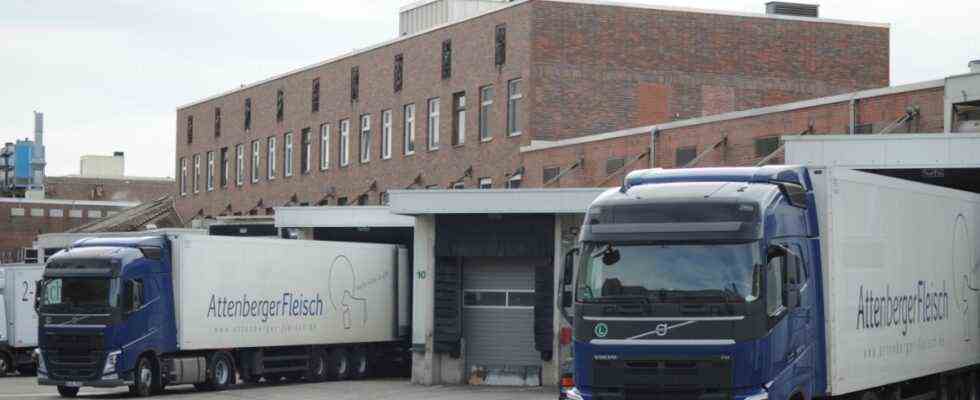When Munich’s first central slaughterhouse went into operation in 1878 and the slaughterhouses and backyard operations in the old town closed, this was a breakthrough in terms of hygiene and quality of living. The fact that the growing city absorbed it again shortly afterwards was considered acceptable, at least as long as cheap rents compensated for a certain amount of noise and stench.
Not only that is long gone: even long-term residents have been complaining about increasing pollution for years. The Ludwigsvorstadt-Isarvorstadt district committee therefore regularly discusses an exit from operations, or whether and how much the city should still invest here.
The current occasion is provided by the 15 million euro project for a new truck wash on the premises on Zenettistraße. The outdated facility in the south of the former cattle yard, which was actually only designed for interior cleaning, has to give way in the medium term to the planned construction of around 600 apartments on the former transshipment point for slaughtered cattle. It is also controversial whether it is currently operated legally, spatially separated from the slaughterhouse to the north, since meat and cattle transporters are actually not allowed to leave the site uncleaned.
Critics see the investment as an obstacle to leaving the slaughterhouse
Technically, in terms of urban development and legal aspects, the two-storey planned new building on Zenettistrasse, partly sunk into the ground, seems sensible, if not imperative. The local politicians still reject it, as the long-term leases with the operating companies on which the slaughterhouse is based will expire in 2040, even with options to extend.
Both the BA and local resident Thomas Sporer, who appears in the matter with great neighborly support, doubt the profitability of the investment, especially since the new system will not go into operation before 2024 and could become significantly more expensive again if building prices rise sharply. Even if the facility is also used by customs and the food truck in question is sent here for cleaning, the BA regards the project as a hidden investment and an obstacle to leaving the slaughterhouse.
The critics see themselves strengthened by the falling meat consumption. How difficult outsourcing can be, especially in increasingly meatless times, is shown by considerations to open a location in Aschheim, which the community citizens clearly rejected in a referendum in 2016. If meat sales continue to fall, existing plants in the region could be expanded instead, is an alternative idea from the BA.
City representatives who had been invited by the BA preferred to leave the answers on the remaining time of the slaughterhouse in Munich to the elected politicians. However, they were able to provide information on some sources of smell and noise and on possible remedies: A “flotation system” for the preliminary clarification of the wastewater that arises when scalding slaughtered pigs turned out to be an olfactory imposition. It was installed in 2019 without the knowledge of the authorities and initially vented improperly.
The large number of units involved does not make checking easier
The improved system is no longer giving off stench, assured Christian Heindl from the environmental department. However, they do not achieve the full clarification performance, for example with the hydrocarbon toluene. According to Heindl, the colleagues from municipal drainage know more. Just one example of how the large number of units involved makes control difficult, as Boris Schwartz, city director in the unit for climate and environmental protection and former plant manager of the Munich market halls, admitted.
Better air in the Thalkirchner / Kapuzinerstraße area is promised by the higher and more modern replacement for a rusted ventilation chimney above the pig slaughter, according to Heindl. He asserted that the RKU is keeping a keen eye on the operators and recently fined 500 euros three times for not locking doors. But even with repeated violations, the department cannot close operations as long as the fault has not been clarified legally watertight.
The assignment is apparently particularly difficult with trucks from various suppliers who, despite the fact that the power connections on the site have now been expanded, keep their diesel engines running to operate the cooling units – especially after the actual loading and unloading, when the drivers have to stay at the site, to keep their rest times. Noise and air pollution can at least be measured, while the stench can still not be included in limit values: As an RKU employee explained, the annoyance can still only be classified via the subjective classification of odor samples, not via automatic sensors, even if the The term “olfactometric measurement” suggests this.

